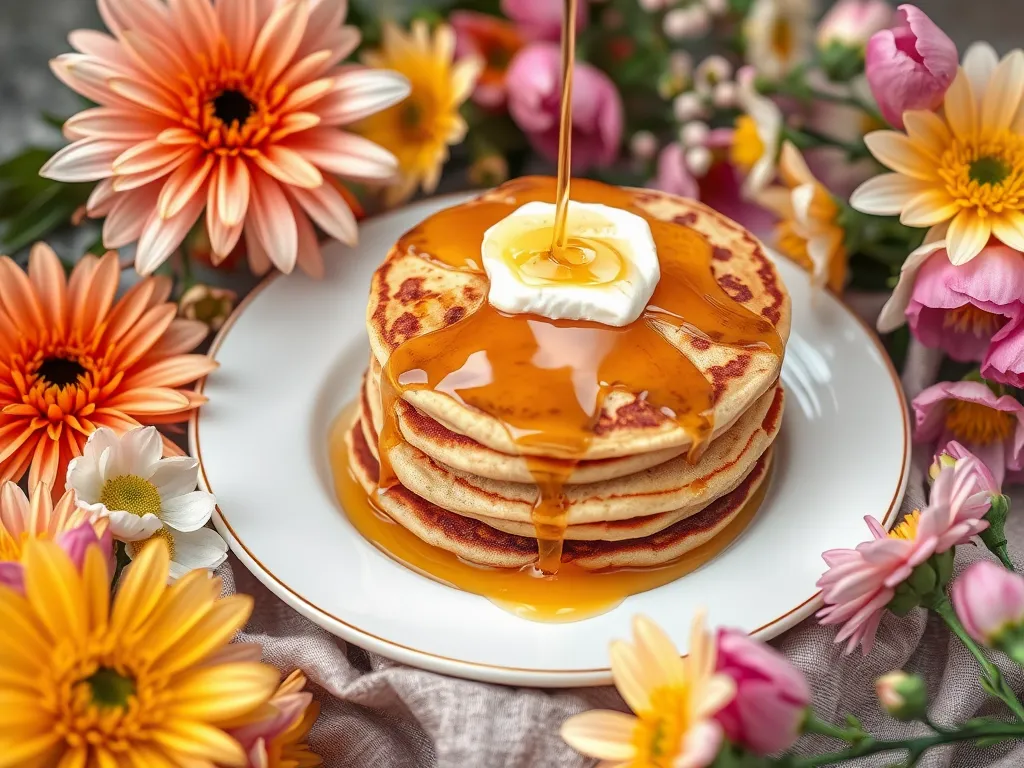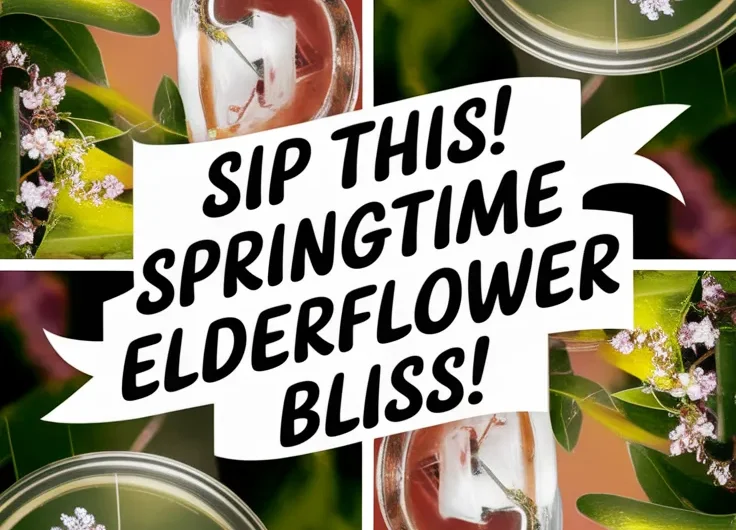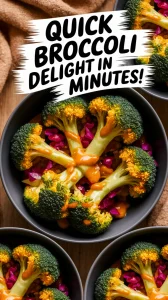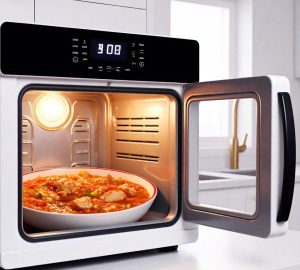Spring’s delicate elderflower flavor shouldn’t require hours of simmering—or even turning on your stove. Our microwave method whips up the syrup in under 5 minutes, letting you skip the sticky stovetop chaos entirely.
Imagine a drink that’s floral, citrusy, and fizzy all at once—this mocktail tastes like a sunny garden party in a glass. Perfect for picnics, brunches, or just pretending your backyard is a fancy English meadow.
We’re covering how to nail the microwave syrup, build your mocktail, store leftovers, and even tweak the recipe for mint or ginger twists.
Jump To:
Elderflower Mocktail for Spring (Microwave Syrup)
Recipe by Lisa MartinCourse: BeverageCuisine: International4
5
minutes2
minutes120
kcal17
minutesSay goodbye to complicated syrup-making processes and embrace the microwave! This elderflower mocktail combines a quick homemade elderflower syrup with refreshing sparkling water and citrus. It captures the essence of spring and is perfect for any occasion, whether it's a brunch, picnic, or garden party.
Ingredients
elderflower syrup
sparkling water
juice of
ice cubes
slices for garnish
mint leaves . for garnish
Directions
- In a microwave-safe bowl, combine 1 cup of water and 1 cup of sugar.
- Stir until dissolved.
- Microwave on high for 1-2 minutes until the mixture boils, remove from microwave, then add 1 cup of dried elderflowers.
- Let it steep for 10 minutes.
- Strain the syrup into a clean container, discarding the flowers.
- In a large pitcher, mix the elderflower syrup with 2 cups of sparkling water and juice of 1 lemon.
- Stir gently to combine.
- Fill glasses with ice cubes, pour the elderflower mocktail over the ice, and garnish with lemon slices and fresh mint leaves.
- Serve immediately and enjoy your refreshing spring drink..
Notes
- For the best flavor, use high-quality dried elderflowers. Adjust the amount of syrup according to your sweetness preference. If you can't find dried elderflowers, you may substitute with elderflower cordial from the store, adjusting the quantity to taste. This mocktail is versatile, and you can also use other citrus fruits like lime or orange for a different twist!
What Does an Elderflower Mocktail Taste Like?
Picture sipping a spring breeze that’s equal parts floral, citrusy, and just a tad sweet. Elderflower syrup brings a delicate, almost lychee-like aroma, balanced by zesty lemon and bubbly sparkle. It’s like drinking the idea of a dewy morning in an English garden—minus the mud on your shoes.
At my sister Candice’s birthday last May, we served this mocktail to skeptical friends who swore they “don’t do floral drinks.” Five minutes later, they were asking for the recipe. One even tried to lick her glass—though we’ll blame that on the disco music and confetti chaos.
Why Make Elderflower Syrup in the Microwave?
Traditional stovetop syrup requires 30+ minutes of simmering and stirring. Our microwave method? Done in 8 minutes flat. You’ll avoid caramelizing the sugar (no burnt pan scrubbing!) and keep the elderflower’s fragile fragrance intact. Quick desserts like a 2 minute microwave cinnamon roll mug cake offer a similarly fast and delicious treat that’s perfect for satisfying your sweet tooth in no time.
Time-saving Benefits for Spring Entertaining
Between Candice’s birthday cake fiasco and a last-minute balloon arch, I had zero time for fussy syrups. The microwave let me prep three batches during commercial breaks of her favorite rom-com marathon. Guests raved, and I didn’t miss a single slow-motion runway kiss scene. Microwave treats, like a 2-minute microwave honey nut cereal mug cake, can be a game-changer in these busy moments, providing a deliciously quick dessert option without much hassle.
Need syrup for a crowd? Double the recipe and microwave in 90-second intervals, stirring between each. You’ll have enough for 12 mocktails before your oven could even preheat to “procrastination mode.” If you’re looking for a quick side to serve alongside, microwave cornbread mix in just 90 seconds is a perfect option. This method offers a speedy and delicious addition to any meal, making your cooking process even more efficient.
Now, let’s gather your ingredients—spoiler: you likely have most hiding in your pantry already.
Ingredients for Microwave Elderflower Syrup
Let’s raid your kitchen! You’ll need three core components for this syrup. Pro tip: use a 4-cup microwave-safe glass measuring cup—it handles heat well and makes pouring easier later.
Fresh Elderflower Clusters (or Dried Substitute)
Fresh elderflowers shine here—look for 8-10 bright white clusters at farmers’ markets. Avoid any with brown spots! Dried elderflowers (1/4 cup) work too, though the flavor will be earthier. Last spring, I mistook Queen Anne’s lace for elderflower once—0/10, do not recommend.
Granulated Sugar Alternatives: Honey or Agave
White sugar gives classic clarity, but we’ve swapped in 3/4 cup honey with success. Agave nectar? Use 2/3 cup—it’s sweeter. My neighbor’s bees “donated” last year’s honey harvest, and the floral notes paired perfectly with the elderflowers.
Water Ratio Adjustments for Microwave Safety
Microwaves vary, but 1.5 cups water prevents boil-overs in 1000W models. For weaker microwaves, up to 2 cups works. I learned this the hard way when my first attempt resembled a sticky science fair volcano. It’s just one of those things you have to be careful with when you’re microwaving water for elderflower syrup in spring mocktails.
Also See: Quick & Zesty Microwave Coconut Lime Cake
How to Make Elderflower Syrup in the Microwave
This isn’t your grandma’s all-day syrup method. We’re done before your TikTok feed refreshes. Just remember: microwaves heat unevenly, so stir every 30 seconds!
Step 1: Preparing Elderflowers Safely
Gently rinse fresh flowers under cool water to evict tiny bugs (they don’t tip). Snip off 90% of the stems—they contain trace cyanide. Dried flowers? Skip rinsing, but break up clumps with your fingers. For preserving flowers effectively, consider using the microwave, a quick method that retains their color and shape beautifully.
Step 2: Microwave Power Settings & Timing
Combine everything in your microwave-safe container. Heat on 50% power for 4 minutes, then full power for 1 minute. Watch closely! My microwave once zapped syrup into a bubble monster because I got distracted by cat memes. It’s important to be aware that microwaves can be unpredictable. Many household items, like certain foods, can blow up inside, creating a big mess.
Step 3: Straining & Cooling Techniques
Pour through a fine mesh strainer lined with cheesecloth. Squeeze gently—over-pressing makes syrup bitter. Cool it in an ice bath for 10 minutes if you’re impatient like me. Room temp works too, but spring waits for no one! If you’re looking for a quick breakfast solution, consider using lazy microwave instant pancake mix syrup. It’s a simple way to add sweetness to your pancakes without any fuss.
Avoiding Overheating: Key Microwave Tips
If your syrup starts foaming wildly, pause and stir. Burnt edges? Add 2 tbsp water and microwave 15 seconds. Remember: syrup thickens as it cools, so aim for slightly runnier than maple syrup when hot — especially when used for delicate drinks like elderflower mocktails in spring.
Also See: Easy 2-minute Spiced Chai Recipe Made Quickly!

Assembling the Spring Elderflower Mocktail
Time to play bartender! Fill a highball glass with ice made from edible flowers (more on that below). My friend’s garden party version used violet ice cubes—guests thought she’d hired a pastry chef.
Lemon Juice Vs Lime Juice: Flavor Variations
1 oz fresh lemon juice gives classic brightness. Lime adds a tropical twist—ideal for poolside sipping. At Candice’s party, we did a 50/50 mix and called it “Citrus Confusion.” Reviews were… spirited. To elevate similar cocktails, consider a spicy margarita mix or a unique microwave citrus syrup that enhances your drinks with vibrant flavors.
Sparkling Water Vs Tonic Water: Carbonation Options
Top with 4 oz plain sparkling water for purity. Tonic adds quinine bitterness that balances sweetness. Pro tip: Chill your bubbly base! Warm soda = sad fizz. I keep mine in the freezer for 15 minutes pre-party.
Edible Flower Ice Cubes for Presentation
Drop tiny elderflower florets or pansies into ice trays before freezing. Use filtered water for crystal clarity. My first attempt used tap water—the cubes looked like they’d survived a mud wrestling match.
Now that your mocktail’s Instagram-ready, let’s talk about keeping that leftover syrup fresh for round two (or three… no judgment).
How to Store Microwave-made Elderflower Syrup
Your floral syrup deserves better than cluttering the counter. Store it in an airtight glass jar—plastic absorbs odors. I once used a leftover pickle container and learned the hard way why cucumber-flower hybrids aren’t trending.
Refrigeration Vs Freezing for Longevity
Fridge storage keeps syrup fresh 2-3 weeks. Freeze portions in ice cube trays for 3-month survival. Thaw overnight in the fridge or microwave a cube at 30% power for 20 seconds. My spring brunch hack? Freeze syrup with edible flowers inside—instant mocktail starters!
Reheating Syrup Safely in Microwave
Cold syrup too thick? Microwave 1/4 cup portions at 50% power for 15 seconds, stirring between zaps. Overheating destroys delicate flavors faster than my dog finds unattended sandwiches. For crystalized syrup, add 1 tsp hot water and stir vigorously. Infusing flavors in syrups can also lead to delicious concoctions, such as boozy iced coffee. Experimenting with a microwave syrup infusion can elevate your iced coffee by adding a kick of fun flavors.
Common Mistakes & How to Fix Them
We’ve all syrup-spectacular fails. Last May, I turned a batch into caramel while multitasking with flamingo lawn ornaments. Here’s how to salvage (or avoid) spring sip snafus.
Burnt Syrup Rescue Methods
Scorched bottom? Immediately transfer unburnt syrup to a new container. Stir in 2 tbsp cold water and strain through coffee filters. For mild smokiness, add a pinch of cinnamon—it’s like a campfire… if campfires smelled like English gardens.
Adjusting Sweetness After Microwaving
Too sweet? Whisk in 1 tsp lemon juice per 1/4 cup syrup or dilute with chilled sparkling water. Not sweet enough? Dissolve 1 tbsp honey in 1 tsp hot water, then mix into syrup. My niece once used salt instead of sugar—we “fixed” it with extra lime and called it a “savory spritzer.” To elevate your beverages even further, consider making a refreshing lavender lemonade. The combination of lavender and lemon creates a delightful taste, and you can easily prepare a spring microwave syrup to enhance the flavor.
Preventing Cloudy Syrup Texture
Cloudiness comes from starch in flower stems or over-pressing during straining. Use cheesecloth and let gravity do the work. If it’s still murky, add 1/8 tsp citric acid while warm—it’s like glasses for your syrup. Pro tip: Filtered water prevents mineral haze better than tap.
Now that we’ve navigated syrup disasters, let’s explore how to twist this recipe into minty or gingery delights. A refreshing mojito mocktail combines the perfect blend of mint syrup and other flavors. Making one in a mug using the microwave can elevate your drink experience with ease.
Now It’s Your Turn to Mix Up Spring!
With just a microwave and a handful of ingredients, you’ve got everything needed to craft this floral elderflower mocktail. The syrup’s delicate sweetness paired with citrus and bubbles creates a drink that tastes like spring in a glass.
We’d love to hear how your microwave syrup turns out – whether you stuck with classic lemon or experimented with ginger. This versatile base opens endless possibilities for seasonal sips!




